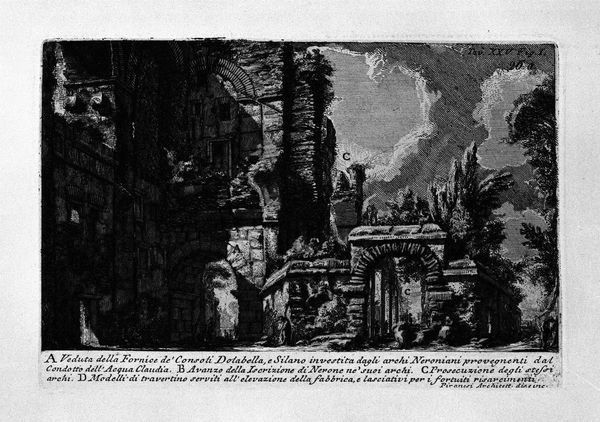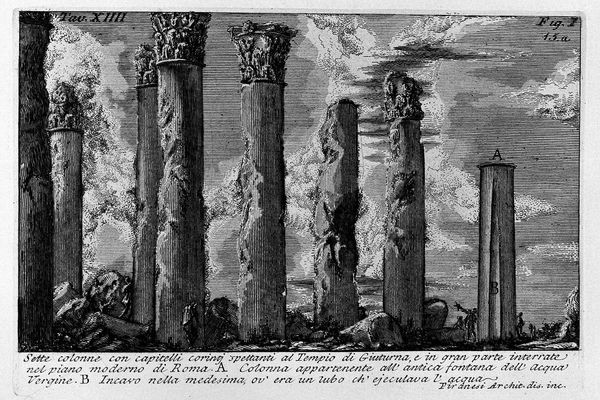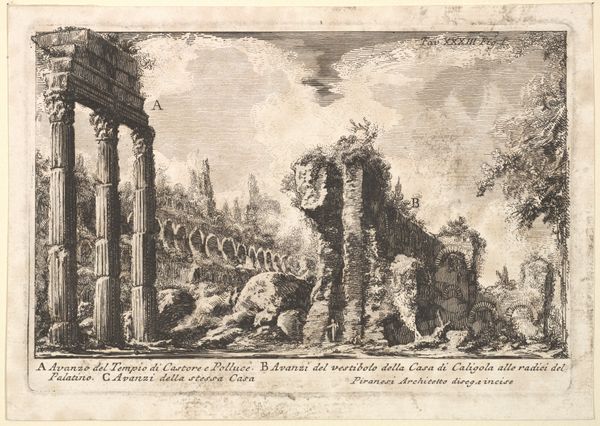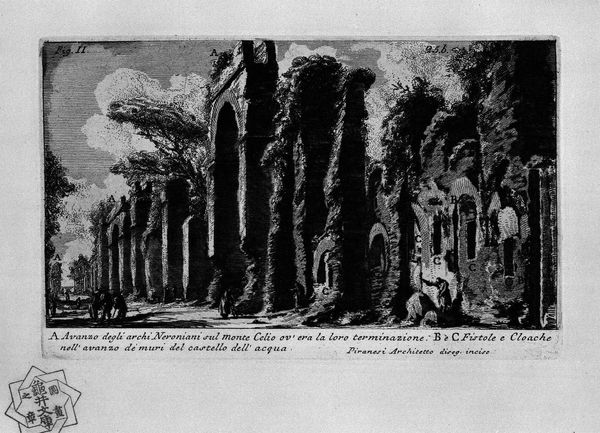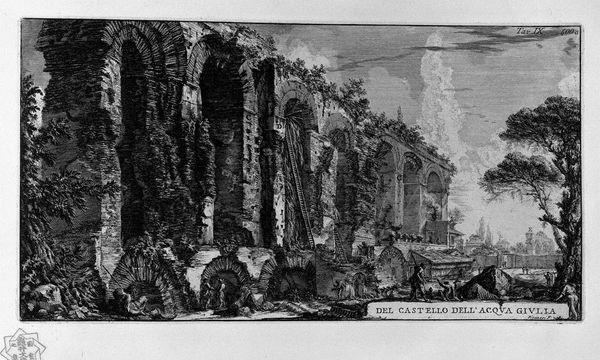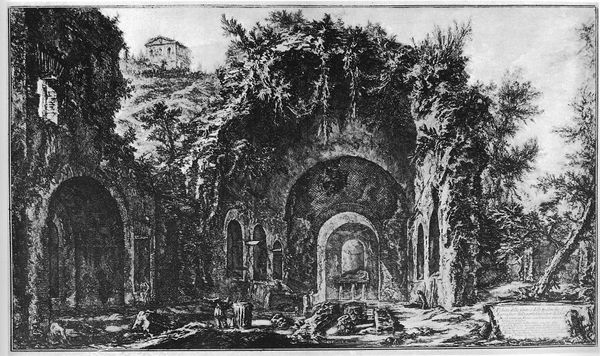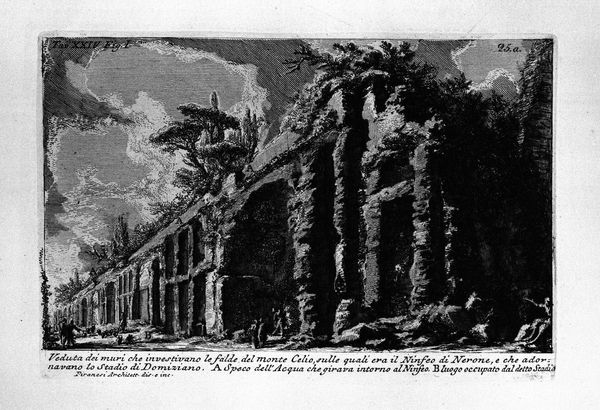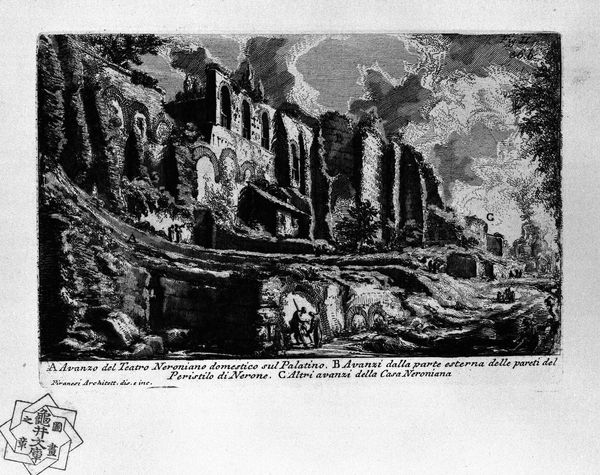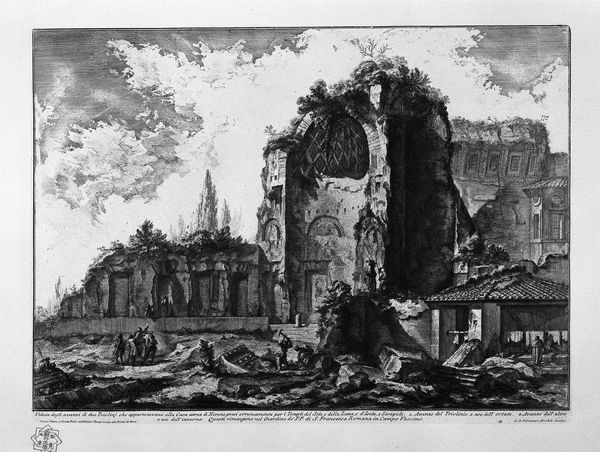
The Roman antiquities, t. 1, Plate XXXIII. Ruins of the temple of Castor and Pollux. 1756
0:00
0:00
drawing, print, etching, paper, ink, engraving, architecture
#
drawing
# print
#
etching
#
landscape
#
perspective
#
paper
#
form
#
romanesque
#
ink
#
column
#
line
#
cityscape
#
academic-art
#
engraving
#
architecture
#
realism
Copyright: Public domain
Editor: This etching by Giovanni Battista Piranesi, titled "Ruins of the temple of Castor and Pollux," was created around 1756. It has such a strong sense of atmosphere... What stands out to you? Curator: What strikes me are the ruins themselves – remnants pregnant with memory, cultural touchstones reduced to fragmented forms. Observe how Piranesi meticulously renders each stone, evoking the emotional weight of time and the inevitable decay of even the grandest civilizations. Consider, what do these architectural ruins signify to the eighteenth-century viewer, who perhaps would see their own world in a similar state someday? Editor: I see what you mean, like a visual memento mori. Curator: Precisely. Beyond a mere representation of crumbling structures, Piranesi subtly intertwines these forms with enduring ideals. Columns, in their partial states, can remind viewers about their cultural inheritance. How do you see this work engaging in a dialogue between past and present? Editor: The way the columns still reach upwards, even broken, speaks to a resilience and enduring human aspiration. But the darkness around it brings this ambition into the realm of history. Curator: Well observed. What do you think this sense of sublime darkness adds to our understanding of collective memory? Editor: That despite the aspirations of a culture, everything will inevitably change and disappear. The shadows almost reclaim these relics... It really is more than just a picture of old stones. I didn’t catch that at first! Curator: It speaks volumes, doesn't it? Ruins become mirrors, reflecting back not only a civilization's rise and fall but the viewer's own place in the ever-turning wheel of time.
Comments
No comments
Be the first to comment and join the conversation on the ultimate creative platform.
